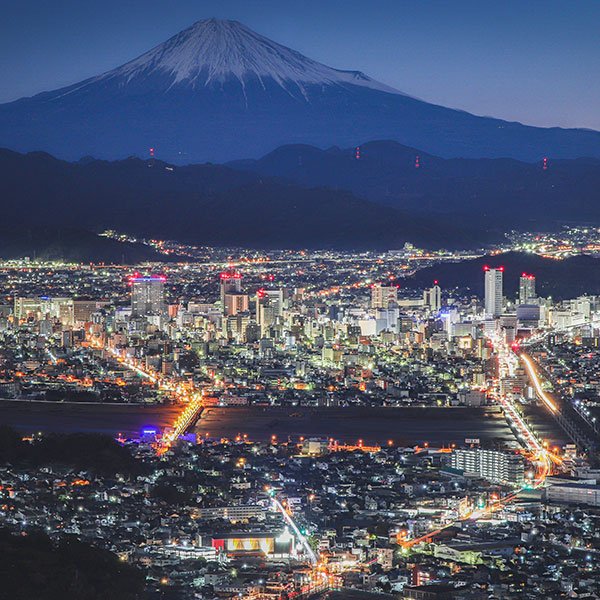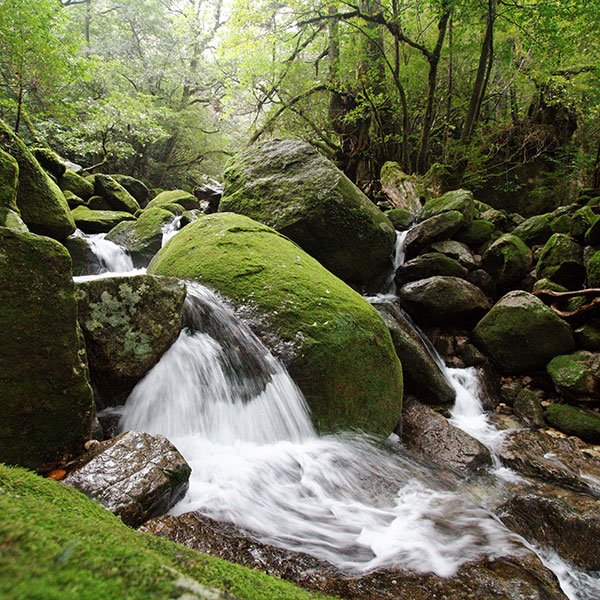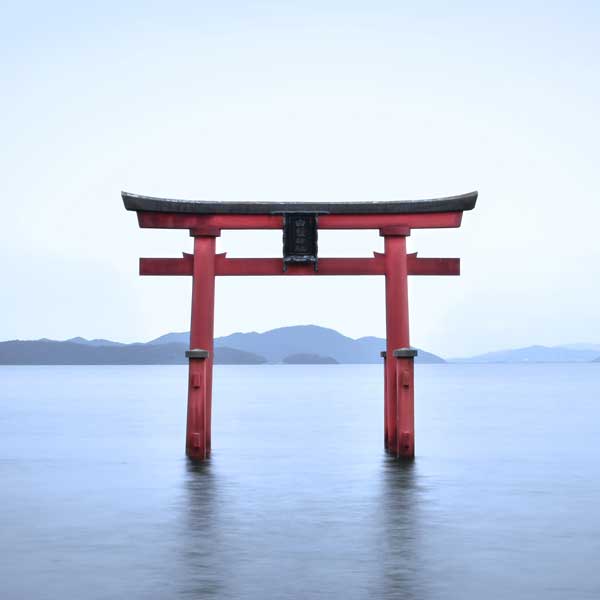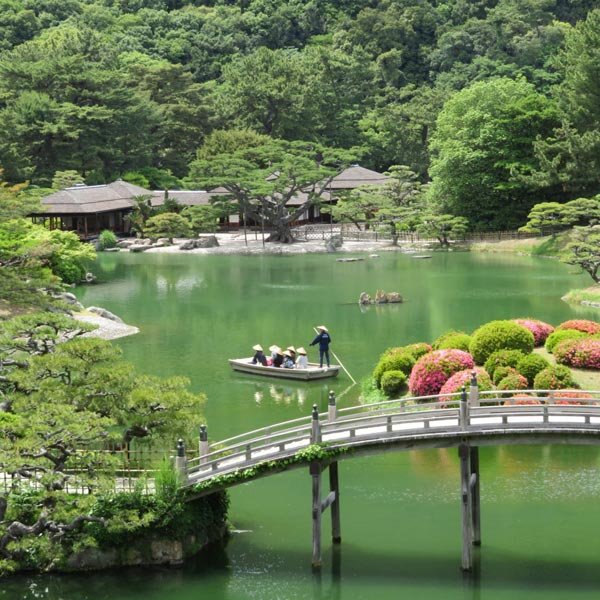18 Best Places to Experience Ancient Japan
by Teni Wada & Lucy Dayman | TRAVEL
© Shimane Prefecture, Izumo Taisha
With a landscape dotted by temples, shrines and historical, untouched pockets of natural beauty, traveling through Japan can be a lot like traveling through time. However, in the grand scheme of the country’s ancient history, many of the major temples, shrines, castles and other well-trodden historical sites are not necessarily that old. In fact many of the more well known sites are under 1,000 years old.
But the origins of Japanese history are not anything like so recent. Intricate decorative objects from as early as 10,000 years ago have been found at sites across the archipelago. If you really want to dig deeper into ancient Japanese history, then here are 18 fascinating ancient sites to add to your next Japan vacation itinerary.
1. Sannai-Maruyama
© Aomori Prefecture, Sannai-Maruyama
Dating back to about 5000 years ago, Sannai-Maruyama is one of the biggest and best preserved sites to explore ancient Japan. Located in Aomori City, to the north of the country, the village became a site of archaeological interest after it was accidentally discovered while being surveyed as a potential site for a baseball field. After excavation, the prehistoric town was reconstructed and rebuilt atop the land under which it had been buried. Today guests can wander through the carefully recreated village.
In addition to the rebuilt houses, the site is also home to a museum displaying some of the items that were unearthed. The long period of ancient Japanese history to which this site belongs is known as the Jomon. The characters for Jomon – 縄文 – means rope patterns, referring to the twisted cord motifs characteristic of pottery from this time. The Jomon period was known as a time of great creative and technological evolution in Japan.
2. Goshono Jomon Site
Located in Ichinohe, Iwate Prefecture in the Tohoku region of Japan’s main island, Goshono Jomon Site features the remnants of a Jomon period village that thrived more than 4,000 years ago. There are more than 800 pit dwellings and a village square found throughout an area covering nearly 90,000 m², suggesting that Goshono was a flourishing long-term community. There is a stone circle, where archaeologists have discovered evidence of ritualized practices such as animal sacrifices. The excavated artifacts on display at the on-site Goshono Jomon Museum provide visitors with valuable insights about the Jomon period such as Jomon-style architecture, living arrangements, and ritual ceremonies. In true Japan fashion, the gift shop stocks goods bearing a cute character, Goshodon, a mystical acorn fairy transported from the Jomon period.
3. Yakushima
© Visit Kyushu, Yakushima Island
Yakushima is a magnificent forested island known for its impressive cedar trees and and its mystical moss-covered scenery which became the setting for the award-winning animated film Princess Mononoke. Approximately 20% of the island is designated as UNESCO World Natural Heritage Site for its unique ecosystem, which included the Jomon Sugi, a giant cedar believed to be the oldest tree in Japan. The name Jomon Sugi references the Japanese word for cedar (sugi) and the Jomon period, the earliest historical era in Japanese history. The Jomon Sugi is believed to be more than 7,000 years old, though conservative estimates date the tree to be 2,000 years old. Regardless of its true age, the Jomon Sugi and the unique ecosystem of Yakushima are a living reminder of ancient Japan.
4. Kamegaoka
© Japan National Tourism Organization, Kamegaoko Site
The Kamegaoka Site in Aomori Prefecture’s rural town of Tsugaru is another hub of Jomon discovery. Experts believe this village came into fruition around the end of the Jomon Period about 3000 years ago. Discovered in the 1600s when clay and other types of Jomon-era pottery were unearthed, the site has undergone extensive excavation since then, and with that came some of the most iconic works of ancient Japanese art, including a bug-eyed earthenware figure of a man, unofficially awarded the title of Japan’s Jomon culture representative, known colloquially as the goggle-eyed clay figurine.
If you visit the site, you’ll find a large recreated goggle-eyed clay figure, and some unearthed archaeological displays. Near the town office is where you’ll find the exhibits held in the Archeological and Jomon Residence Museums.
Before you head out of Tokyo, have you had a chance to visit these 4 Old Tokyo Neighborhoods?
5. Ofune
© Hokkaido Tourism Association, Ofune Heritage Site
Ofune is a large coastal community on the southern tip of Hokkaido that dates back to the early Jomon period (approx. 3,200 – 2,000 BC). Evidence of early humans’ transition from a hunter-gatherer nomadic lifestyle to permanent settlements can be deduced from the hunting and fishing tools and housing structures found at Ofune Heritage. The community consisted of 100 pit dwellings, burial grounds, and storage mounds, and the formation of the structures, along with unearthed artifacts, suggest that the Jomon people were practitioners of animism. Ofune was settled for nearly 1,000 years and the community flourished through trade with other communities in the Tohoku region via the Tsugaru Route, indicating that “ancient” people were not as primitive as once imagined.
6. Akanko Ainu Kotan
© The Akan Ainu Industrial Arts Association, Akano Ainy Kotan
While not strictly an ancient site, Akanko Ainu Kotan is a cultural facility in Hokkaido Prefecture on the shores of Lake Akan where one can experience the history and culture of Japan’s indigenous people, the Ainu. The kotan ("village" or "settlement" in the Ainu language) is the largest in Hokkaido and is home to 120 people who preserve their native traditions by sharing it with domestic and international visitors. Though the Ainu are the original inhabitants of Hokkaido, they were marginalized under Japanese expansion. Their culture was nearly eradicated in the turn of the 20th century under the Meiji government mandates to force assimilation and the adoption of Western industrial agriculture. The Ainu Living Memorial Hall is a full scale model of a traditional Ainu family dwelling, where one can learn more about this assimilation process and how the Ainu preserved their traditions.
While you’re in Hokkaido, check out our guides to the town of Otaru, and the prefectural capital of Sapporo!
7. Yoshinogari
© Japan National Tourism Organization, Yoshinogari Remains
Located on and around the rolling hills of Kanzaki City in the north eastern side of Saga Prefecture sits the Yoshinogari Remains, a Yayoi period settlement that’s still in the midst of being unearthed and studied. The Yayoi period, from 300 BCE to 300 CE, is known as the country’s iron age, a time of evolution from the Jomon era to the beginnings of modern Japanese culture. Spread over approximately 40 hectares (100 acres), the sheer size of the ancient Japanese site has made it one of today’s most important archaeological discoveries.
The ruins were first opened to the public in 1989 and since have become a fascinating wonderland for history buffs and those casual observers just looking to get a taste of the sometimes incomprehensible depth of Japanese cultural history. The park is quartered into four distinct zones; the Entrance Zone, home to visitor information, the Ancient Forest Zone, home to a park and play area ideal for children, the Moat Encircled Zone, which is where the majority of the village sits, and the Ancient Field Zone where guests can take part in a number of leisure activities, like miniature golf.
8. Tomb of Emperor Nintoku
© Osaka Info, Tomb of Emperor Nintoku
Following the Yayoi period came the Kofun era (about 250-500 CE), named for the enormous burial mounds that date from this time. If there could only be one piece of archaeological discovery that embodies this period of time in Japan, it would be this site, the striking Tomb of Emperor Nintoku in Sakai City, Osaka. One of the three largest tombs in the entire world, this key-hole shaped, three moat surrounded tomb is not freely open to the public, however you can explore the area around the outside. If you’re walking at a casual pace, be prepared to put aside a little time, because it takes around an hour to make a full rotation around the grounds.
During excavation, archaeologists have found a number of fascinating artifacts including armor, swords, glass jars and glass dishes all assumed to be possessions belonging to Emperor Nintoku. Given that this site is still a mausoleum, a full in-depth excavation has not gone underway. If you want to learn more, visit the Sakai Municipal Museum nearby which exhibits some of the discovered items.
9. Saitobaru Kofungun
© Saito City Tourism Association, Saitobaru Kofungun
Situated in Miyazaki, an area with a reputation for having a huge selection of burial mounds, Saitobaru Kofungun is arguably one of the best places to really embrace the rich legacy of Kofun period.
Shrouded in mystery, it’s still unknown for whom these tombs were built, however if you’re interested in doing a little sleuthing and try to figure out the mystery, you’re welcome to visit the well preserved historical park which also offers free tours. In early November the site also hosts the vibrant Saito Tomb Festival, a showcase of colorful costumes and danger defying fire shows.
10. Hokenoyama Kofun
Hokenoyama Kofun
The Hokenoyama Kofun is a large, three-tiered burial ground near the sacred Mount Miwa in Nara Prefecture. It measures 85 meters long with a diameter of 55 meters. Scholars suspect Hokenoyama Kofun to be one of the earliest examples of Kofun. During the Kofun period, the Yamato clan rose to power, established the Imperial House, and centralized political power, through which the kofun style spread throughout Japan. Immediately next to this burial complex is the Hashihaka Kofun. This could possibly be the very first mound of its type. However, excavations on this and similar sites are banned because they are believed to house the remains of the ancestors of today’s Imperial family.
11. Mount Miwa
© Visit Nara, Mount Miwa
Mount Miwa, a sacred mountain in Sakurai, Nara Prefecture has significant historical and cultural importance. It is believed that Omononushi, the god of abundance and prosperity, resides here. At the foot of Mount Miwa is Omiwa Shrine, one of the earliest Shinto shrines in Japan, dedicated to Omononushi. According to the Nihon Shoki, a detailed historical record of ancient Japan, Mount Miwa is the departure point of Yamatohime-no-mikoto, daughter of the 10th emperor, Emperor Suinin, in her 20 year quest to find a suitable location to enshrine the sun goddess Amaterasu.
12. Ise Jingu
Ise Grand Shrine, also known as Ise Jingu, is Japan’s most important Shinto Shrine, and is dedicated to the sun goddess Amaterasu, the progenitor of the Japanese imperial dynasty. Its chief priest and most sacred priestess have all been members of the imperial family or their descendants
According to the Nihon Shoki, Japan’s historical chronicles, the shrine was founded in Mie Prefecture in 4 BC by the daughter of Japan’s 10th emperor. Centuries later, Emperor Temmu declared Ise Grand Shrine to be Japan’s primary Shinto shrine, and each year, more than 1,5000 sacred rituals take place on the grounds of Ise Grand Shrine,
While “Ise Grand Shrine'' conjures the image of one large structure, it actually consists of 125 shrines. Its main shrine buildings are Naiku and Geku, dedicated to Amaterasu and the food goddess Toyouke, respectively. The shrine buildings are rebuilt every 20 years according to shikinen sengu, a Shinto rite in which a deity is transferred to a new shrine building.
Find out more about the Extraordinary Shinto Shrines You Should Visit!
13. Kumano Kodo Pilgrimage Trails
© Tanabe City Kumano Tourism Bureau, Kumano Trails
The adage, “walk a mile in someone’s shoes” is a reminder to be humble and practice empathy, and walking the Kumano Kodo Pilgrimage Trails is a healing and spiritual journey where one can walk with gods. These ancient pilgrimage routes are a 70 km long journey that traverses the mountainous region of Kumano, in Wakayama Prefecture, south of Kyoto, the ancient capital of Japan. Kumano Kodo Pilgrimage Trails retrace the journey made by the Japanese Imperial court during the Heian period (794 - 1185), establishing three Shinto shrines (Kumano sanzan) and Nachisan Seiganto-ji Buddhist temple. For more than 1,000 years, people from all walks of life have traversed the Kumano Kodo Pilgrimage Trails in search of clarity and understanding. The trails, along with the Camino de Santiago, remain the world’s only pilgrimage routes to be designated as a UNESCO World Heritage Site, solidifying their role in ancient Japanese history.
14. Okinoshima Island
An island so sacred that only few men have ever stepped foot on its shores, Okinoshima Island is a tiny isle with a grand history and significant cultural importance. Okinoshima Island sits between the island region of Kyushu and Korea and was a pivotal site for ancient trade with the Korean peninsula and the Asian mainland. In fact, many artifacts unearthed on Okinoshima are evidence of this intercultural exchange. In the modern era, Okinoshima receives nearly 200 male visitors annually who honor the souls of the sailors that perished in a nearby battle during the Russo-Japanese war. All visitors must undergo a purification ritual before arrival, and under no circumstance are women allowed to visit, which bears a resemblance to the Shinto rites and rules over the national sport of sumo.
15. Sefa Utaki
© Visit Okinawa, Sefa Utaki
Utaki are holy places scattered across the Okinawa Islands, and Sefa Utaki is a collective of the most sacred sites in the southeastern portion of Okinawa’s main island. According to Ryukyuan legend, Sefa Utaki is the site where the goddess of creation, Amamikyu, appeared. During the Ryukyu Kingdom (1429-1879), high ranking priestesses, kikoe ogimi (who were royal women of the court), conducted sacred rituals at Sefa Utaki, and men were not allowed to enter this sacred space. Though it is a place of worship, there are no artificial structures in Sefa Utaki. Rather, each prayer site is a natural rock formation or vegetation. Among the 6 ibi, or sanctuaries here, is Sangui, a triangular tunnel formed by two large slabs of limestone rock. In contemporary Japan, Sefa Utaki is regarded as a power spot, a mystic place where one can feel the earth's energy.
16. Zakimi Castle
© Ryukyu Interactive, Zakimi Castle
While Zakimi Castle is by no means an “ancient” Japanese site (it was originally constructed in the 15th century), it is certainly worth visiting if one wishes to delve deeper into the history of indigenous population of the Okinawa Islands. Zakimi Castle is located on a hill about an hour’s drive away from Naha, the capital city of Okinawa Prefecture and offers panoramic views of the city and the Kerama Islands offshore.This UNESCO heritage site is regarded as a fine example of the stone masonry of the Ryukyuan Kingdom as its thick and wavy stone wall was a formidable means to ward off invaders. The Yuntanza Museum nearby has artifacts and exhibits on the Ryukyuan Kingdom focusing on the local community, its art, folkcraft, and history, including the Yuntanzan Hanaui weaving technique imported from Southeast Asia.
17. Horyu-ji Temple
© Ume-y / Flickr Creative Commons, Horyu-ji Temple
To witness one of the nation’s most revered temples, make your way to Nara to come face to face with Horyu Temple, also known as Japanese Horyu-ji, or Ikarugadera, one of the oldest wooden buildings in the world. It’s said that the site was built in the Asuka periods, around 607. Used as a site of Buddhist worship, the temple was commissioned by Prince Shotoku. In 1939 excavation around the site uncovered an older temple site, and many therefore consider the current incarnation to be a recreation of the prehistoric original.
Easily accessible for guests, the Western Precinct is where you’ll find the oldest still standing wooden structures, including a five-story pagoda, the main hall known as Kondo, the central gate known as Chumon. If you’re in Tokyo, visit the Horyuji Homotsukan building of Tokyo National Museum to see some of the temple’s most important objects on display.
Horyu-ji is one of Japan's many incredible and unique religious sites. Take a look at these Surprising Temples through the eyes of some great Japanese photographers.
18. Izumo Taisha
© Shimane Prefecture, Izumo Taisha
The youngest site on this list is the Izumo Taisha shrine, found in the rural city of Izumo, sitting along the Sanin Coast. Considered to be the oldest existent shrine in Japan, it’s said that ancient chronicles mentioned the existence of the shrine as early as the 700s.
On the shrine grounds you’ll find the towering torii gate, which leads in to the main grounds. From there you’ll follow the pathway before arriving at the main hall, the tallest shrine building in Japan. To really admire the beauty and power of this site, it’s best to explore the grounds thoroughly, before making your way to Shimane Museum of Ancient Izumo, a museum home to an eclectic array of displays covering the history of Izumo.
Have you visited any of these ancient Japanese sites? Let us know what you thought in the comments below!













ART | February 5, 2022